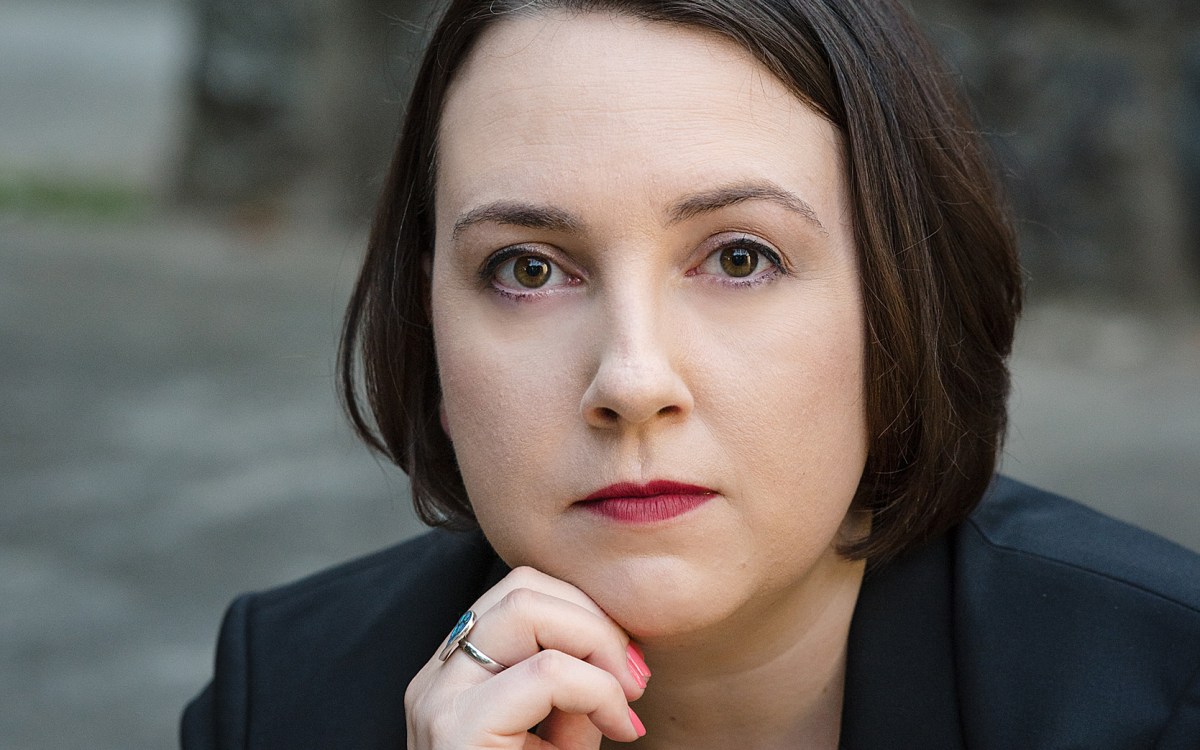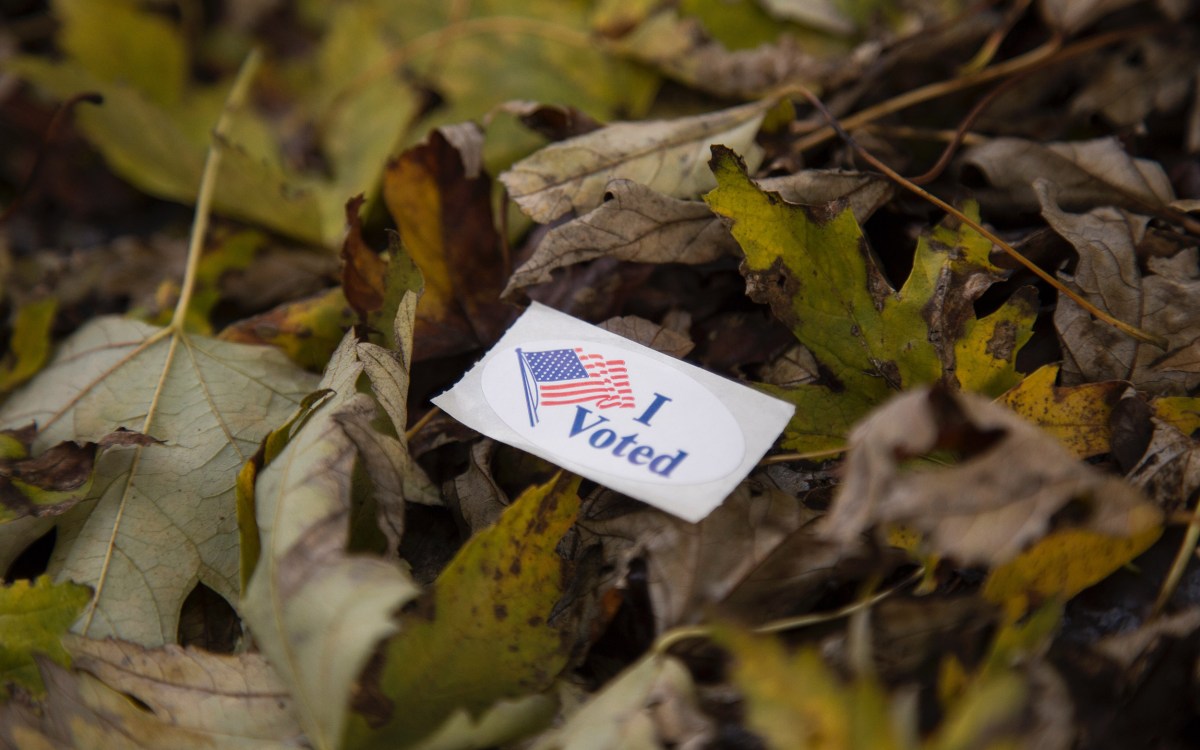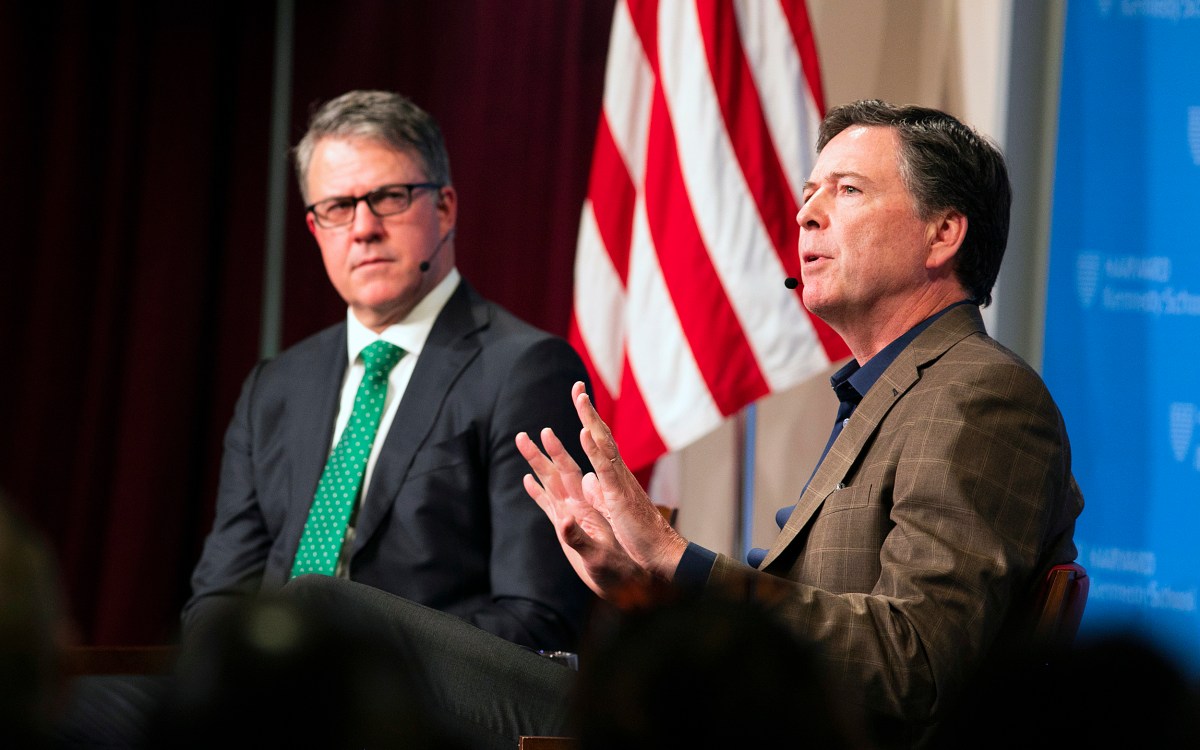Pollster looks at how pandemic, loss of RBG may affect election
Possible bellwethers: Turnout, Florida, and voters 65 and older
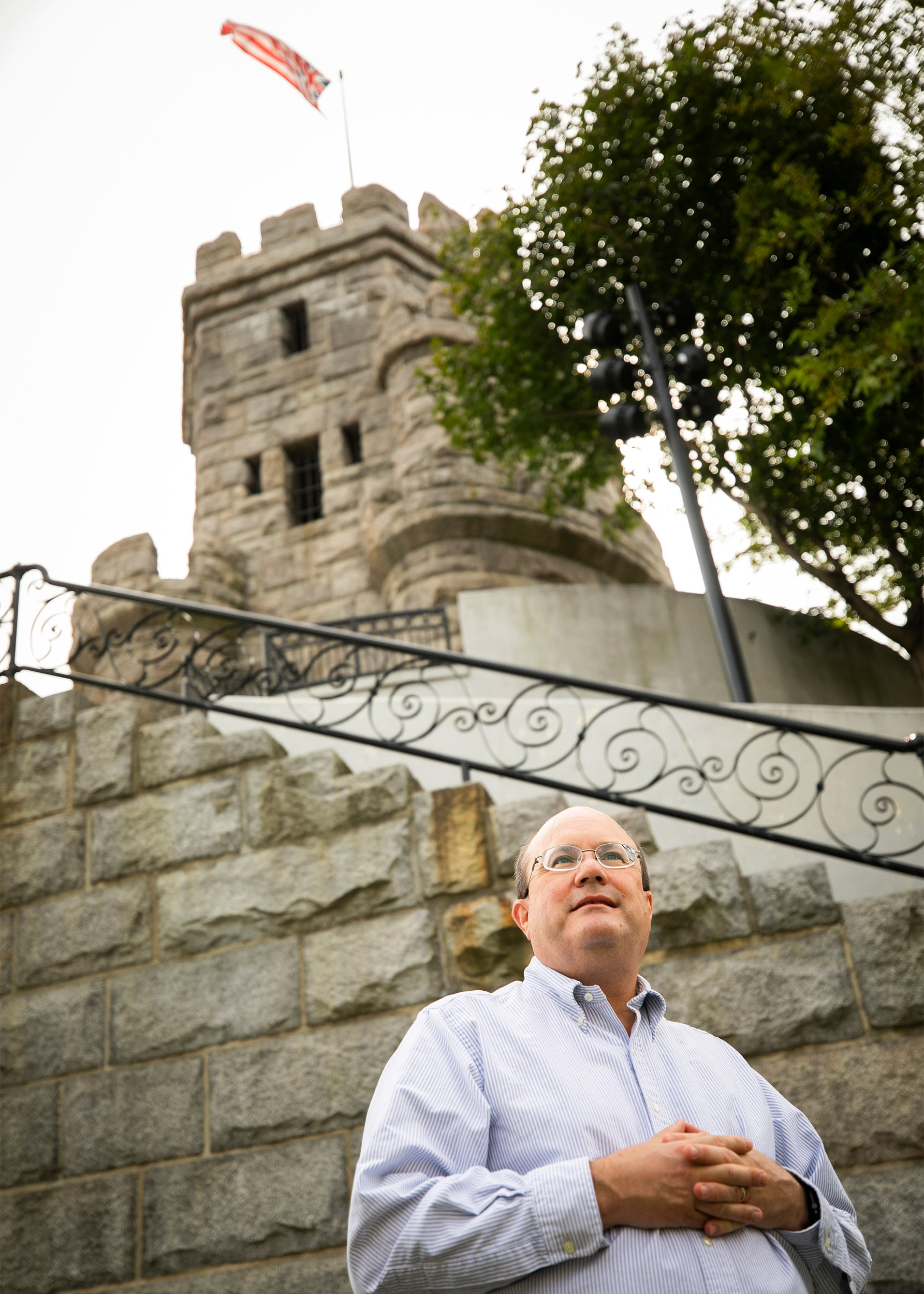
Chase Harrison of the Institute for Quantitative Social Science offers a close examination of what the presidential polls are telling us as Election Day approaches.
Stephanie Mitchell/Harvard Staff Photographer
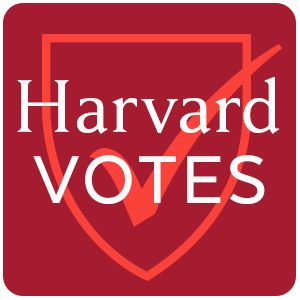
Public opinion research will need an impeccable 2020 election to repair its battered credibility after 2016, when most polls on Election Day had Hillary Clinton clearly ahead if not running away with the presidential race. It will be an especially tricky election taking place amid an ongoing pandemic, reeling economy, civil unrest, wildfires in the West, and the death of Justice Ruth Bader Ginsburg leaving a particularly consequential vacancy on the Supreme Court. Voting is now underway in 29 states, with a record six in 10 registered voters saying they want to cast their ballots before Nov. 3. What insight can the polls offer on this unprecedented election? Chase H. Harrison is senior preceptor in survey research in the Department of Government and associate director of the Program on Survey Research at the Institute for Quantitative Social Science. The Gazette spoke with him about what polling suggests about this year’s race so far and what he’ll be paying attention to during the campaigns’ final weeks.
Q&A
Chase Harrison
GAZETTE: Many voters have become very skeptical since 2016, when polling in states like Wisconsin, Michigan, and Pennsylvania, where the election was decided, failed to anticipate key factors like the large pro-Trump turnout or that undecided voters overwhelmingly broke late for Trump. What’s different this time?
HARRISON: The biggest change is that in 2016, many statewide polls were not weighting their data by education, so they were not adjusting for differences in the level of education in respondents. People with college degrees, almost across the board, have higher response rates to surveys than people without college degrees. Prior to 2016, there weren’t huge differences in the vote based on college degree and non-college degree. The polls that didn’t weight by education systematically overestimated Clinton’s vote. It’s also a problem that you’re trying to do analysis by state, and many of the state-level polls are of middling quality. There are a small number of good polls. What is different is most polls are now weighting for education. People think they’ve learned the lessons from 2016, so we should expect the polls to be at least a little bit better.
GAZETTE: What are some interesting trend lines you’re seeing right now?
HARRISON: In 2016, voters 65 and older were one of the groups that was most likely to support Trump. The polling now is showing that these voters are more evenly split or even that they slightly prefer Biden. And since this is such a large group, and it’s especially concentrated in some swing states like Florida, Pennsylvania, and Arizona, it has the potential to move the popular vote and also the Electoral College toward Biden. I think that’s the most interesting trend that I’m following right now. It’s also true the Biden doesn’t seem to be doing as well among African American and Hispanic voters as [Hillary] Clinton did, and that is reflected in the marginal difference in the two-party vote. That’s mostly due to a higher percentage of those voters saying that they don’t know who they’re going to vote for, as opposed to Trump increasing his actual numbers with that group. But unless Biden makes up that difference, that would be trouble for him unless it is counterbalanced with a larger group such as voters with a college degree or voters age 65-plus. The other thing that’s always interesting to me, especially teaching in a college environment, is whether younger voters, who prefer Biden, will actually turn out to vote. Normally, younger voters have low levels of turnout. The one exception to that in recent times was in 2008 voting for Barack Obama. So it will be interesting to see if the youth voter turnout is like it was in 2008 or more like 2016.
“Since there are going to be more people voting earlier now, it should make the pre-election polls more accurate.”
GAZETTE: What question reveals the most vital information in this election?
HARRISON: For an incumbent president, presidential job approval is really key. An election with an incumbent is typically seen as a retrospective vote on the performance of that incumbent. The closest indicator we have of that is “presidential job approval.” That is a key indicator I look at other than something like presidential vote choice.
GAZETTE: Which is the more important number, job approval or disapproval? On average, polls show Trump with approvals in the low 40s and disapprovals in the low 50s.
HARRISON: It’s not clear whether it’s approval that drives it or disapproval that drives it. The notion is that people are registering their evaluation on the incumbent. It’s a different dynamic when there are two challengers. But for an incumbent president, you ordinarily want to see job approval being high. If it perfectly correlates with the vote, above 50 percent would get you the election. Trump’s approval has been below 50 for most of his presidency, and that’s the one factor that ordinarily is the most suggestive in a race with an incumbent.
GAZETTE: If there’s a dramatic uptick in voting by mail and/or early voting, how does that change the way that campaigns will use polling data, and does it change how the public should be looking at them as well?
HARRISON: Since there are going to be more people voting earlier now, it should make the pre-election polls more accurate. With an Election Day exit poll, you’re finding out how people voted five or six hours or so before the votes are counted. With early voting or vote by mail, you’re finding out days, even weeks, before. So that should make them more accurate. Now the caveat I’d have here is this assumes that the mailed ballots are received and are counted. In the primaries, there were a number of problems with mail ballots being disqualified for different sorts of reasons. So what I’m going to be looking at closely is how the mail is functioning, but even more so, how many of those mailed ballots are disqualified when they’re received. Because that’s a case where you could see pre-election polls or even exit polls differ from the election results. A poll can only measure whom you intended to vote for; it doesn’t measure whether that vote was counted.
GAZETTE: What impact could the vacancy on the Supreme Court have on the election?
HARRISON: It’s hard to tell. Historically, Republican voters have been more passionate in translating court choices into votes, so a simple take is it would benefit Trump, if only in energizing turnout from socially conservative voters. But if you look at the specific states in play and the coalitions in play, it might be more complex. Trump was already doing well among the conservative voters who care about the court. In contrast, in the last election, Trump drew quite a few votes from working-class voters, especially in the Midwest, who are pro-choice, and who might care about the court shifting too far to the right on social issues. So, I don’t have a clear take on whether in the end it will impact the election one way or another.
GAZETTE: How are polling firms adjusting for respondents who want to mislead or deceive them or making sure that they’re not just talking to people willing to answer polls?
HARRISON: There’s not a ton of evidence that people lie to pollsters about their election choices in the United States. The bigger problem is that you get different types of people completing the poll than you sampled. You have a low response rate and its differential for some groups, with education being the classic one that tripped people up in 2016. So what you try to do is to adjust for all of the factors that you can measure, to control for that differential nonresponse. The key factors that people typically include are geographic region, sometimes urbanicity, gender, age, education, race. Once you control for region, urbanicity, gender, age, education, and race, you should have a more accurate result. I would point out that the national polls in 2016 were almost remarkably right. They overestimated Clinton by about a percentage point and in fact, most of the polls had come out before the [former FBI Director James] Comey revelation [about the discovery of emails possibly linked to an investigation of Clinton’s private email server]. There was a lot of talk about “shy Trump voters” in 2016. There’s not much empirical evidence for that.
GAZETTE: What about in this election?
HARRISON: Well, people don’t seem to be very shy about announcing their support for Donald Trump. Wearing a hat is certainly something more public than telling a pollster that you support a candidate. If there were a “shy Trump” effect you’d expect to see self-administered polls like internet polls showing higher margins for Trump than interviewer-administered telephone polls. You don’t see that.
“The race could hinge on Michigan, Wisconsin, or Pennsylvania. If Trump wins Florida, he could probably take the election with any one of those three states, and they will all be slow-counting states.”
GAZETTE: With the Electoral College, only about eight states will decide this election. Which demographic group of voters in these states are potentially the most decisive?
HARRISON: The thing I’m watching the most is voters 65-plus because that’s a large group. It’s a group that’s supported Trump before. And so, as the data currently suggests that they’re not supporting Trump, it’s hard to see how Trump can pull off a re-election without an advantage in voters 65-plus even if Trump improves his margins with Hispanic voters. In Florida, if you compare the Hispanic vote to the 65-plus vote, even though they’re both large, there’s really no comparison in terms of the influence on the election.
By and large, the swing states are the same as they were last time. The one real exception seems to be Arizona, which has been polling consistently well for, in fact possibly better for, Biden than some of the upper Midwest states. … So that’s going to be an interesting state to watch.
GAZETTE: A record number cast votes for a midterm election in 2018. Does robust voter turnout favor one candidate over the other?
HARRISON: The current data tends to show that Biden does slightly better among all voters than he does among likely voters. The fewer survey respondents who are considered likely voters, the more the results tend to shift a little bit toward Trump. It’s not really pronounced, but it’s enough to make a difference in a close election. So, I would say a high turnout election would benefit Biden. It’s one of the reasons I’m looking so much at that 65-plus vote, just because it’s not what I would have expected. And, if it holds, it would make all of the other factors less relevant because it’s a large demographic group, with high levels of turnout, that supported Trump in 2016.
GAZETTE: Even though most states may not finish counting ballots on Election Night, which state could be a reliable bellwether on Nov. 3 for the eventual winners?
HARRISON: The state to watch on the eve of the election is Florida because Florida allows early counting of absentee ballots, they have a history with large vote-by-mail, and they are likely to report the results on election night. So if Florida goes for Biden, we will know on election night that it’s exceptionally unlikely that Trump can win the election.
This year, the thing that we haven’t had in the past is we could have some suspense for some number of days after the election where the ballots have not been counted in ways that could impact the Electoral College in one way or another. The race could hinge on Michigan, Wisconsin, or Pennsylvania. If Trump wins Florida, he could probably take the election with any one of those three states, and they will all be slow-counting states.
GAZETTE: What will you look for in the polls to see how public concerns over COVID-19 may be influencing who is voting and who is not?
HARRISON: There are really two unknowns we don’t have any experience with to make any evaluation. One of them is voter turnout in a pandemic. And the other is how well mass mail voting functions in most states. And so with those two items, that is going to insert more variability into the election results and into differences between the polls and the election compared to anything that the polls might tell us. So I don’t know the factors I would be looking at this year because they’re not the factors I would look at in other years. But they would be things like what percentage of ballots are mailed early or what percentage of them are disqualified? Are COVID rates going up or down? Are people more willing to go outside or less willing to go outside? All sorts of factors like that.
Interview has been edited for clarity and length.



